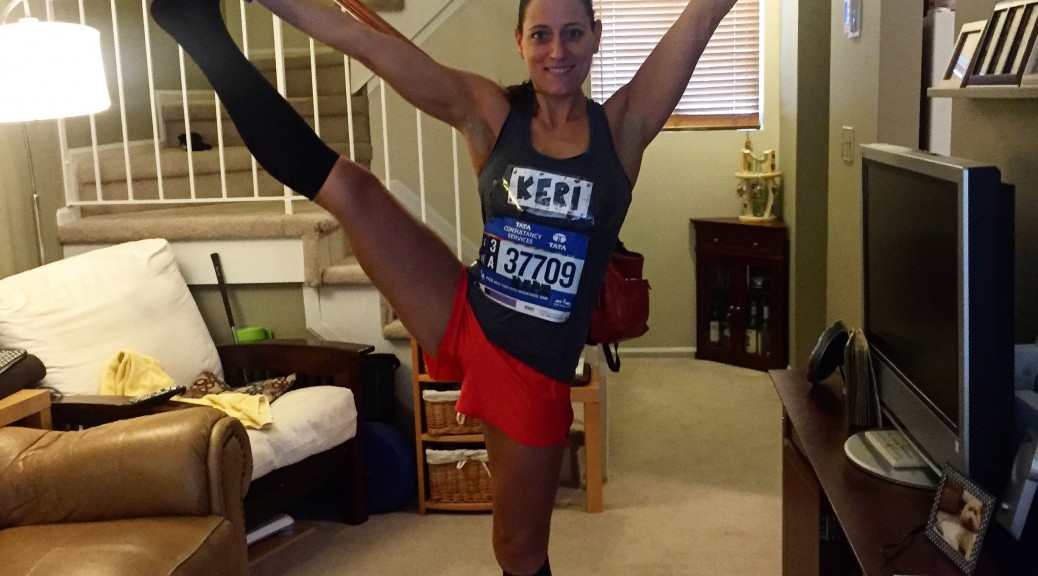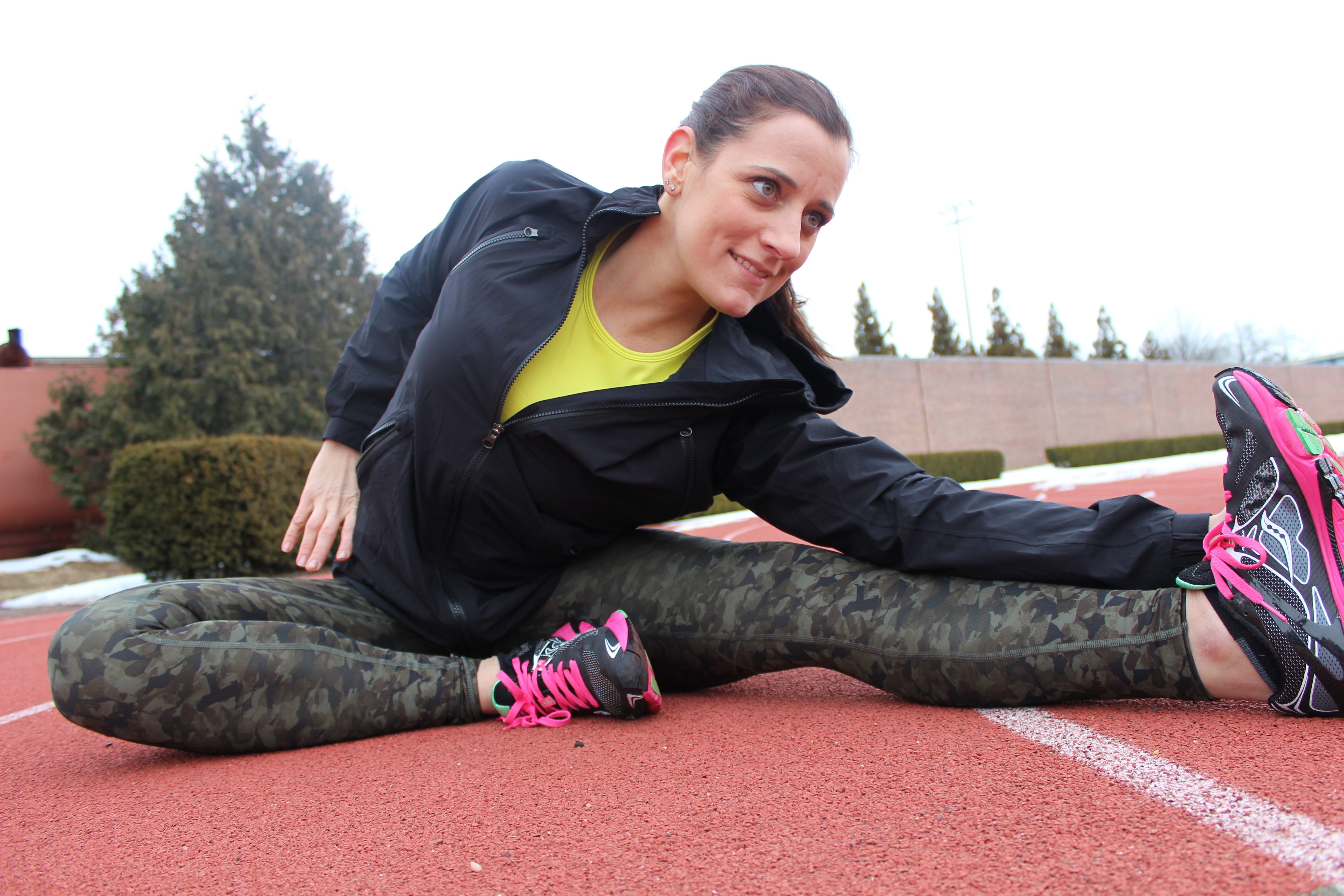Having tight hips and legs can be very painful for a runner, but yoga can help and be a game-changer. Runners, like myself, often suffer from chronically tight hip flexors, hamstrings and calves. This tightness/immobility can lead to pain up the body and along the spine. So being able to lengthen, open, and stretch these areas is important. Yoga will not only help a runner’s performance, but it will also help them prevent injuries and keep them healthy & safe so they can continue to enjoy being able to run!
I recommend that all runners attend a yoga class a few times a week, but if you can’t, try to carve out 10 minutes out of your day day, and practice a few of the poses below to help your running. Begin today and start to see and feel the effects that yoga has on your body.
Strengthen and lengthen your leg muscles, improve flexibility and prevent injury with these 5 yoga poses for runners.
Downward Dog- (Adho Mukha Svanasana):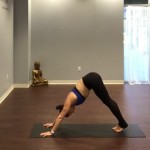 The most common issues for runners are shin splints, knee and foot problems, hamstring, as well as IT-band discomfort. So completing poses that are going to lengthen, and strengthen the hips, quads, calves and hamstrings are important. Downward Dog does a lot of that, in addition to opening the arms and upper back, down dog stretches the legs too. Lift your hip bones straight toward the ceiling and push your heels into the ground for the best overall stretch.
The most common issues for runners are shin splints, knee and foot problems, hamstring, as well as IT-band discomfort. So completing poses that are going to lengthen, and strengthen the hips, quads, calves and hamstrings are important. Downward Dog does a lot of that, in addition to opening the arms and upper back, down dog stretches the legs too. Lift your hip bones straight toward the ceiling and push your heels into the ground for the best overall stretch.
Low Lunge- (Anjaneyasana)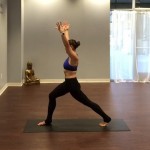 : Running can be tough on the hips. Low lunges can help strengthen the core while also stretching the thighs, groin, and opening tightened hips. Reach your arms to the ceiling and breathe.
: Running can be tough on the hips. Low lunges can help strengthen the core while also stretching the thighs, groin, and opening tightened hips. Reach your arms to the ceiling and breathe.
Tree- (Vrksasana): Balancing on one leg is great for athletes. The  more you can strengthen your legs andimprove your balance, the less likely you are to twist an ankle or fall down when you’re on a trail or any type of uneven surface. Balancing on one leg, bring your other foot into your standing leg, try to be above or below the knee; avoiding pressing into the knee joint. Focus your gaze on an object in the distance and stand tall for 30 seconds to a minute.
more you can strengthen your legs andimprove your balance, the less likely you are to twist an ankle or fall down when you’re on a trail or any type of uneven surface. Balancing on one leg, bring your other foot into your standing leg, try to be above or below the knee; avoiding pressing into the knee joint. Focus your gaze on an object in the distance and stand tall for 30 seconds to a minute.
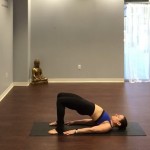 Bridge- (Setu Bandhasana): Backbends help open the shoulders and the front of the body. They also strengthens the core and activate the glutes. Bridge pose is a good counter pose to running, because the longer we run the more we tend to hunch forward. Lift your hips up toward the sky and try to keep your body in a straight line with your core engaged. To open your chest even further, clasp your hands together underneath your pelvis and try to roll your shoulder blades toward each other. Squeeze your glutes and breathe.
Bridge- (Setu Bandhasana): Backbends help open the shoulders and the front of the body. They also strengthens the core and activate the glutes. Bridge pose is a good counter pose to running, because the longer we run the more we tend to hunch forward. Lift your hips up toward the sky and try to keep your body in a straight line with your core engaged. To open your chest even further, clasp your hands together underneath your pelvis and try to roll your shoulder blades toward each other. Squeeze your glutes and breathe.
Reclined Pigeon- (Supta Kapotasana)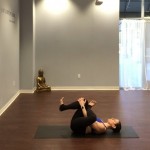 : Traditional Pigeon can put a lot of pressure on the knees if not done correctly, so reclined pigeon can be a nice alternative. Lie on your back with your knees bent, and cross your left ankle over your right quad. Gently pull your legs toward you for a stretch in your left hip, glute, and hamstring, then repeat on the other side
: Traditional Pigeon can put a lot of pressure on the knees if not done correctly, so reclined pigeon can be a nice alternative. Lie on your back with your knees bent, and cross your left ankle over your right quad. Gently pull your legs toward you for a stretch in your left hip, glute, and hamstring, then repeat on the other side
Running + Yoga = LOVE
Happy Running!

